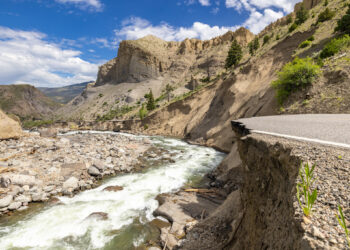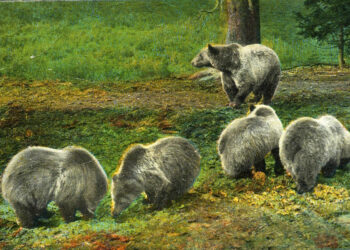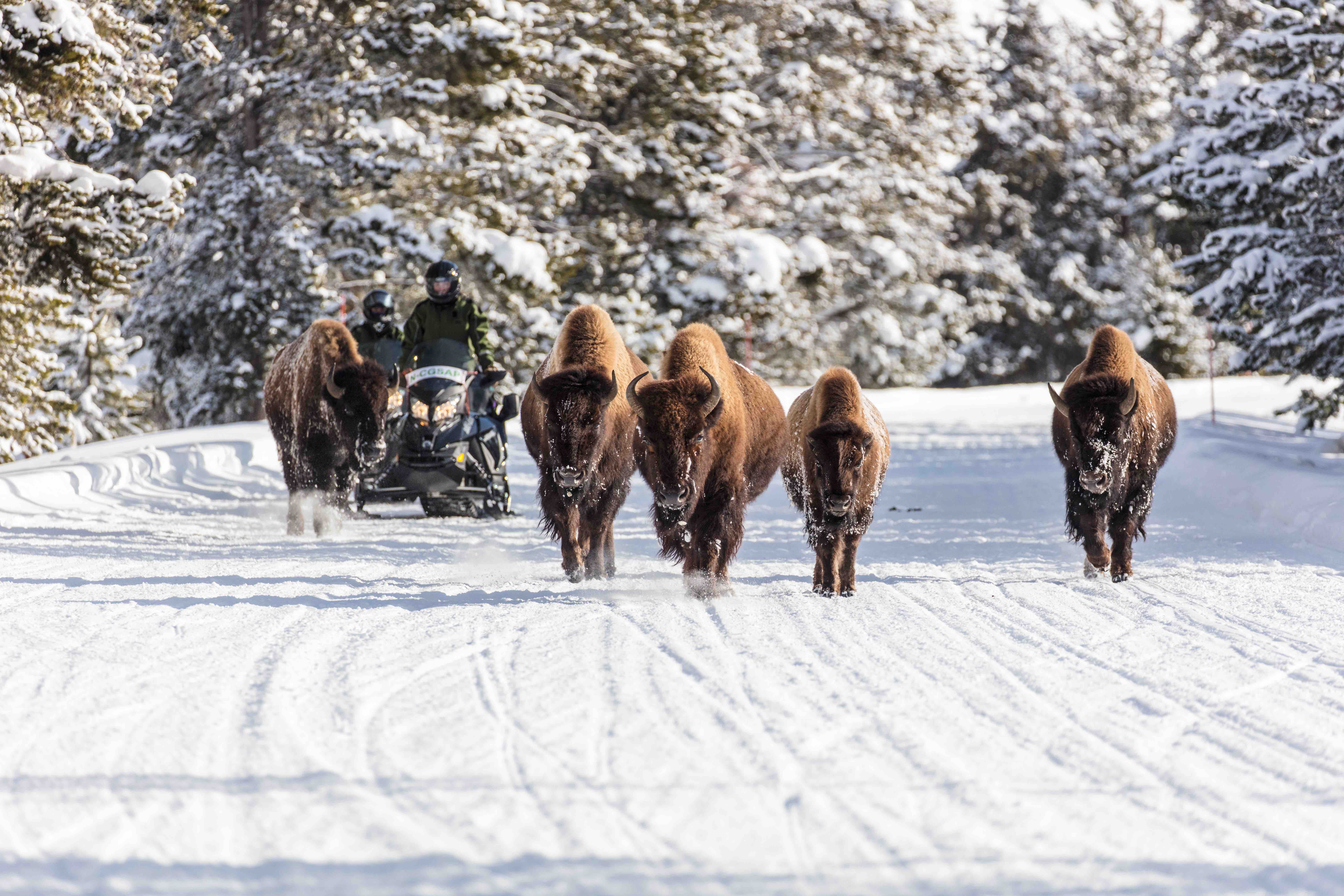Story and photos by Mike Coil Explore Big Sky Contributor
Some fishing buddies and I were sitting in a cafe in Hardin early one morning in September 1988, waiting for our breakfast. We arrived the night before, drift boats and fishing gear in tow, and were planning to spend a few days on the Big Horn River.
Opening the Big Horn County News as I waited for my eggs, I read a headline that ended our trip: “Montana Closed to All Recreation.”
With thousands of acres already burning in the region that summer and dry conditions, then-Gov. Ted Schwinden made an executive order closing all public lands in the state to recreational activities.
Of all the fires that summer, none was more impressive than the one in Yellowstone National Park.
Forest fires had been suppressed in the park since its 1872 founding. The resulting fuel load in Yellowstone’s forest needed only the right conditions to explode into a giant fire.
Beginning in the early 1970s, experts began to realize that fire had a natural place in a forest’s overall health. By the mid-‘70s, a “let it burn” policy was instituted in the national parks. When combined with the fuel load, this set the stage for what took place in 1988.
The spring of ‘88 was wet and lush with growth, but by late June, the weather dried up and the heat became unrelenting. By early July, things were tinderbox dry, and fires appeared around the area, including several small ones in Yellowstone. In accordance with the “let it burn” policy, no suppression actions were taken.
The park fires grew over the next few weeks, and in mid-August several of them merged into an unstoppable mega fire. Tens of thousands of acres inside the park were ablaze, and firefighting crews were mobilized to save park infrastructure.
When the fire moved out of the park along the west boundary, it became Gallatin County’s responsibility, and soon the call went out for all firemen to report to their stations and mount a defense. I was a volunteer firefighter with the Sourdough Fire Department at the time, and as soon as I saw the story in the Hardin paper, I called the fire hall from a pay phone.
Our department was ordered to put a crew on a fire truck provided by the state. My buddies at the department said we needed to schedule crews on the engine into the West Yellowstone area. I rushed home and helped organize a rotating schedule that allowed us to man our engine but didn’t require any firefighter to be gone too long from work and family.
I rolled with the first crew, and it was obvious by the time we got to Gallatin Gateway that this was a very serious situation. Other engines and crews were also on the move, and thick smoke was already obscuring visibility. Much of Gallatin Canyon was on standby to evacuate if the fire moved north.

Just inside the most southerly park gate on Highway 191, we ran into fire. It was burning out of control on both sides of the highway, and the resources were spread so thin that no one was able to control traffic or fight the fire. About a dozen tourists were parked along the sides of the highway taking photos. I tried to get them out of the area, but they refused to leave.
Since we still didn’t have radio contact with Incident Command, we continued south, hoping a disaster wouldn’t develop at that location. Closer to West Yellowstone we finally got through to IC, which sent the Montana Highway Patrol to close 191 from the Duck Creek ‘Y’ to Big Sky. It stayed closed for the next couple of weeks.
Dusk was encroaching on the day as we topped the Grayling Creek Divide and had our first look at the Hebgen Lake area. Fire burned on the ridge tops as far as we could see, and huge plumes of smoke billowed in all directions. I knew we had an immense firefighting task ahead of us.
Our engine was assigned to the Duck Creek ‘Y’ area, and we set up a fill site to supply a main water line strung through the trees; this line provided water for many of the crews protecting houses scattered along Duck Creek to the park boundary. We also used it to resupply other trucks with water.
I got my crew organized to man our truck 24-7, so everyone had time to sleep, eat and rest. That first shift was a mix of sitting around, interspersed with intense activity as we moved our truck to various fill locations up and down the creek and the Madison River.
At night we could see the flames, and the fire was growing. I rotated home after four days and was scheduled to make a second trip to the fire 10 days later.
When I returned in the latter half of September for my second rotation, things had changed drastically. The fire had breached a large section of the park boundary, and the crews and equipment were spread thin. Our engine was fighting the blaze, trying to protect a series of homes along Duck Creek, which had been evacuated. We could see the fire through the trees.
A group of farmers from Idaho had come with irrigation sprinklers and set up a rectangle around West Yellowstone to try and to prevent the fire from overrunning the town. There wasn’t enough equipment to build a regular fire line along the park boundary.
Those were four of the most intense days of my life. The fire was active during the heat of the day, and we moved with the other crews along the fire line to douse spot fires and keep the house roofs damp. We also nailed sprinklers to the roofs, tried to keep them running at all times and had hose lines running off six engines, with one positioned at each cluster of houses. When the fire was active, we ran from one house to the next, manning the hose lines and putting out spot fires. Fire brands rained down as we worked.
At one point, a firefighter from Los Angeles who had rented a nearby cabin showed up to help. I don’t know how he got through the roadblocks, but he was an experienced and capable hand, and he spent most of his vacation fighting the fires. We found out later he ranked high up in his department, something he never told us; instead, he pitched in and went to work. I never got to thank him for his selfless effort.
On day three of my rotation, a strong afternoon wind developed and we were fully engaged battling the fire when I noticed a smoke column behind us. I radioed to IC and within minutes they had a chopper in the air investigating. It found a power line had blown down, sparking a new blaze. It had already grown to an acre, and we were ordered to stand by to evacuate.
What happened next was amazing: IC scrounged up every airborne water delivery aircraft they could find and sent them our way. At one point, I counted six aircraft and choppers dropping loads of water from Hebgen Lake. After an hour I received a call that a hand crew was on the fire, and it appeared contained and out. Disaster avoided.
We never put the fires out that summer. Ultimately it was the fall rains and snow that did.
At the time, it seemed like Yellowstone had been dealt a crippling blow, but the forest managers kept reassuring us the forest would recover. Over the next few summers, I was astonished to see the thick stands of new trees that appeared in the park. Those trees are now 25 years old and are healthy and vibrant, with very little beetle kill.
The “let it burn” policy, as shortsighted as it seemed at the time, was the right decision. The forests in Yellowstone are now healthier and less fire-prone because of the big burn of 1988.
__________
Stats on the fire of 1988
From nps.gov
– 9 fires caused by humans; 42 caused by lightning.
– Fires begun outside of the park burned 63 percent or approximately 500,000 acres of the total acreage.
– In Yellowstone National Park itself, the fires affected 793,880 acres, or 36 percent of total park acreage.
– About 300 large mammals perished as a direct result of the fires: 246 elk, 9 bison, 4 mule deer, 2 moose.
– The 1988 fires comprised the largest fire-fighting effort in the U.S. up to that time:
-$120 million spent fighting the fires.
– 25,000 people involved in these efforts.
– After July 21, park managers ordered that all fires be fought, including natural fires that had been allowed to burn.
– Firefighters saved human life and property, but they could do little to control or stop the fires because weather and drought made the fires behave in unusual ways.
– Contrary to what was feared, the fires of 1988 did not deter visitors. In 1989, more than 2,600,000 people came to Yellowstone – the highest annual vistation of the 1980s.















